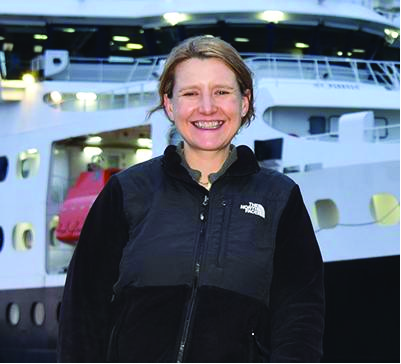A dynamic lithosphere-asthenosphere boundary: the PI-LAB experiment at the Mid-Atlantic Ridge and a global perspective

Dr. Kate Rychert
Associate Scientist – Woods Hole Oceanographic Institute
Geology & Geophysics
Host: Dr. Jessica Whiteside
Wednesday, December 6, 2023
1 pm – CSL 422
or via zoom
Abstract
Plate tectonics revolutionized our understanding of how the Earth works, providing a framework for volcanism, earthquakes, continental formation and breakup and the geologic record of climate change. Yet, what makes a plate “plate-like” and where and how the rigid lithospheric plate transitions to the underlying weaker asthenosphere are widely debated. Ocean lithosphere is an ideal location to study the lithosphere-asthenosphere boundary (LAB), given that it is young and tectonically simple in comparison to continents. However, even beneath the oceans reports of the depth and the factors controlling the LAB are variable, perhaps because they come from different methods with different resolutions and in different locations. I present new geophysical constraints on the LAB from the PI-LAB (Passive Imaging of the LAB) experiment using a range of methodologies, techniques, and resolutions in one location near the equatorial Mid-Atlantic Ridge. We find that the LAB has a variable character depending on location: simple, with monotonic age progression, undulating, and underlain by a thin melt channel. The result reconciles seemingly discrepant and variable reports of the LAB and partial melt from previous studies. Putting the result in the context globally and considering continental settings, temperature determines the thickness of the plate to first order. However, the LAB is dynamic. Melt generation and migration also affect the depth and definition of the LAB and play a role in driving plate tectonics.

